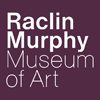CFAAL 397 (HTR)

ABOUT THE ARTWORK
Who made it?

Jessica Eaton is a Canadian photographer whose work explores the components of the photographic process itself. Light, color, time, and the capacities of lenses, shutters, film stock, filters, emulsions, etc. all become tools for modeling and challenging human perception. Using inventive and technically exacting analog methods, Eaton produces alternate visions of reality, capturing images that the naked eye could never perceive. This dialog with the history of modernist abstraction and scientific photography, as well as the contemporary prevalence of digital images and effects, allows her work to explore the limits of vision as well as its speculative frontiers.
What’s going on in this work?

Eaton’s photographs aren’t produced in Photoshop or by using a digital camera. She works only using the analog format of film and painstaking technical processes. The unpredictability of film also means that for each successful photograph, Eaton has around 199 images that weren’t quite right. Considering that CFAAL 397 (HTC) is the 397th work in her series CFAAL (Cubes for Albers and LeWitt), one can imagine the commitment Eaton makes to her work.
Eaton achieves her signature bright palette by using color film and manipulating reflected light. To produce works like CFAAL 397 (HTC), she constructs an actual cube and paints it and the background with stripes of various shades of grey. She then photographs it over and over using the same negative. Before she takes a shot, she places a red, green, or blue color filter over her lens. With each successive exposure, the colors begin to merge together to create vibrant, geometric patterns on the surface of the cube.
“I’m basically exploiting the interior of the camera,” she says. “The colors mix inside it. With paint, mixing colors is a darkening process, but light works in the opposite way, making increasingly bright colors each time. If I kept going, I would end up with a pure, brilliant white.”
To see Eaton’s process, watch this video. Please note that the video has frequent flashing lights and colors, as it is partially filmed in her studio.
Take a closer look.

Click on the full image of CFAAL 397 (HTC) above to see a larger version of the work. Look closely at the photograph and use these questions to guide your looking. Share your thoughts with your family, a friend virtually, or with us by responding to this email.
- Jessica Eaton’s process is highly technical but also relies heavily on the human aspect of photography. If you look closely at CFAAL 397 (HTC), you can see the rough textures of her painted surfaces. As you look closely, where else do you see the hand of the artist in her work?
- Looking closely at the photograph, what are some things you notice about the pattern? Is it consistent throughout? Where and how does it change? What makes the pattern of the cube stand out from the pattern of the background?
- Color mixing with light is different than it is with pigments like paint. Instead of getting darker, the more you expose different colors of light to each other, the closer they get to white. Where do you see this happening in Eaton’s photograph? Do the colors ever fully mix to create a pure white? What colors appear to be closest to being fully mixed?
To receive the collection in your inbox, join the Raclin Murphy Museum’s mailing list.

Engage with the Raclin Murphy Museum of Art by exploring their collection through background information and reflection questions. For more information on the collections, please visit the Raclin Murphy Museum of Art website.
Learn MoreJuly 27, 2020



